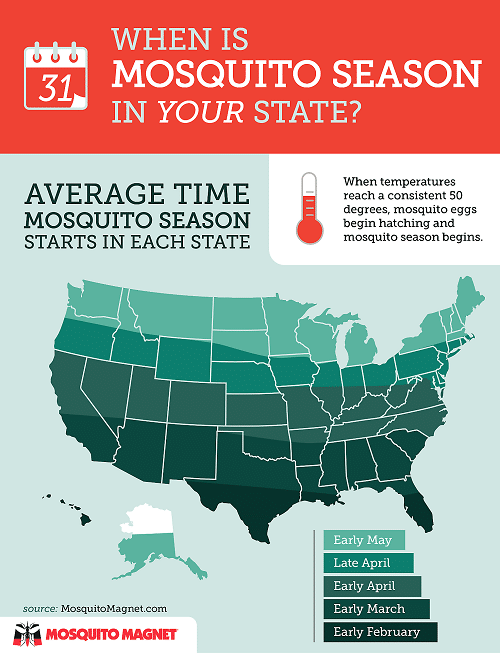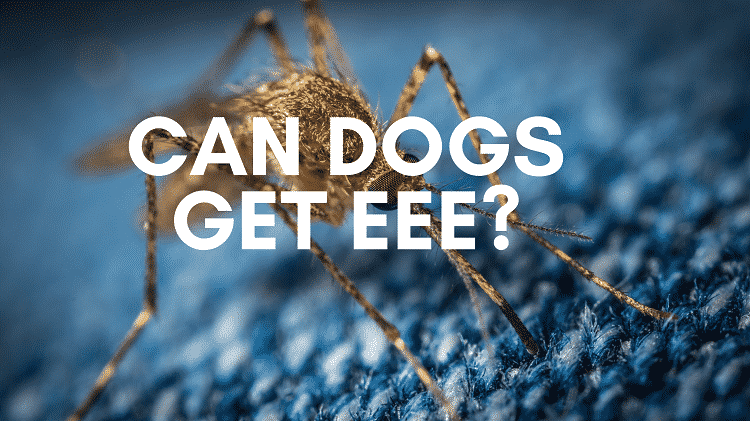Eastern equine encephalitis or EEE is a nasty disease which is carried by and subsequently transferred by mosquitoes. It is called eastern equine encephalitis as it is most commonly seen in horses and most cases are found on the East Coast of the United States. However, don’t be fooled by its name – it can occur in other places (and it has been) and can infect other animals not just those belonging to the equine family. Cases have been recorded with both humans and dogs, although it is rare.
Can dogs be infected by EEE?
Yes, but it is extremely rare and records have shown that most cases of dogs infected with EEE were puppies aged 6 months and younger. EEE can only be transmitted via a direct bite from a Mosquito carrier and those infected can’t spread it themselves.
Mosquitoes don’t tend to favour dogs for a number of reasons most likely due to limited time outside. Horses, however, spend longer outside and do not move around as much, have less hair and exposed skin and are therefore a better target.
But, dogs can be infected if they are outside during high mosquito season and are significantly more at risk the younger they are. The most likely place a dog will be infected with EEE is easter/southeastern America, Central America and South America.
How bad is an eastern equine encephalitis (EEE)?
EEE has a very high mortality rate in horses (90%) and humans (30%) and even greater in dogs as many can be asymptomatic for days and there is no canine vaccine. Once the symptoms appear, the physical condition of the infected dog degrades rapidly. Sadly, in the vast majority of cases of dogs who contracted EEE they were either euthanised or succumbed to the virus.
One of the problems with EEE is that it shares the same symptoms as many other illnesses and the rate of which the physical condition worsens making it one of the hardest viruses to beat. Even more sad is that because of its rarity little has been done to promote awareness or to create a vaccine.
Sadly, EEE affects the brain to an extent that should they survive the virus they are likely to have severe brain issues afterwards which is why euthanasia is often the most humane response as hard as that is to accept.
Eastern equine encephalitis is lethal for dogs and owners who live or visit common areas where it exists should learn more about it and how they can keep their dogs as safe as possible.
What are the symptoms of EEE
The incubation period for EEE in dogs is around 3-5 days, during this time they may be asymptomatic (display no symptoms). After this period, a dog can exhibit one or many of the following symptoms:
- Fever
- Seizures
- Lethargy
- Aggression
- Lack of appetite
- Lack of coordination
As you can see, there are so many symptoms of an EEE infection in a dog which are shared with many other illnesses which is why it’s so difficult to diagnose and try and cure.
Ultimately it is a virus affecting the brain and so functions controlled by the brain would be affected which is nearly everything. Most symptoms will inevitably lead to a brain hemorrhage.
What should I do if I think my dog has EEE?
Any dogs with the above symptoms should be taken to a veterinarian immediately. Regardless of whether you think they have EEE or not. There is always an underlying cause to those symptoms and most causes are serious and are unlikely to go away without intervention.
How to protect dogs from getting EEE
EEE is carried and passed on by mosquitoes so to avoid it you’ll need to protect your dog from mosquitoes. They’re also much more common on the east and southeast coast of the United States so step 1 is to find out when mosquito season is in your state. We have found this awesome infographic from Mosquito Magnet which should help a lot.

Secondly, infections are rare in dogs but more common in younger dogs so outdoor play should be limited during mosquito season especially if they’re 6 months or younger. The most common time for mosquito appearances is dusk so try and walk them in the mornings and during the day and keep inside at dusk.
Thirdly, you should never apply bug spray to a dog as it is toxic, however, Dr Gary Ryder recommends applying bug spray to a towel and then wiping it on your dog’s neck and back.
Related Articles


